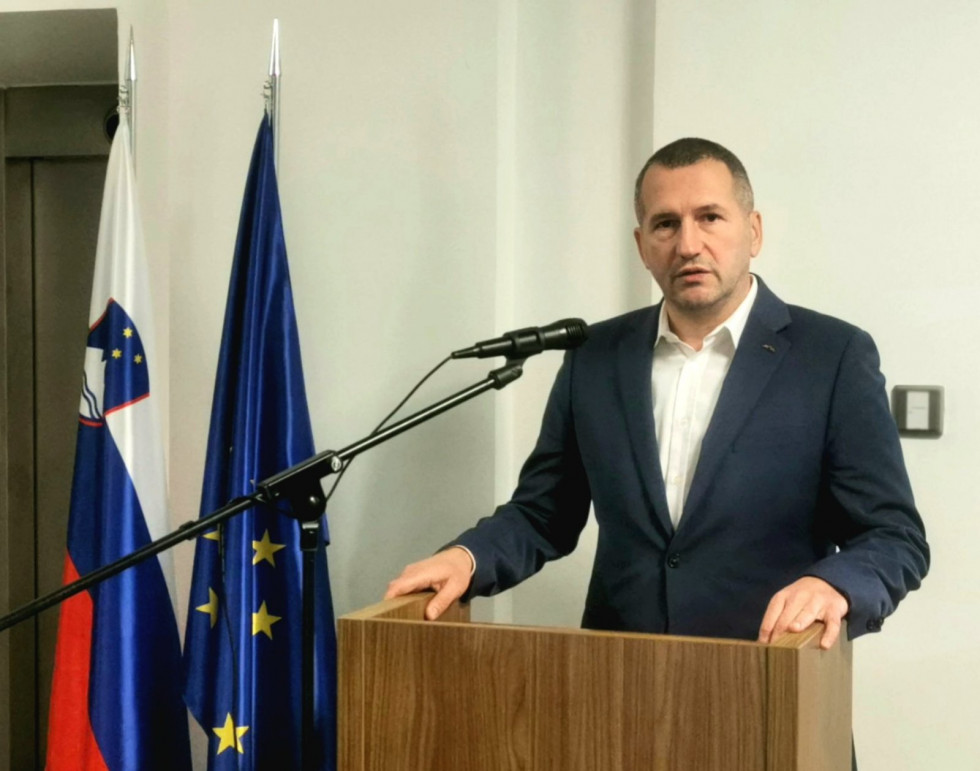State Secretary Dr Damir Črnčec opens a guest exhibition in Kadetnica before World Holocaust Remembrance Day
The keynote speaker at the ceremony was the State Secretary at the Ministry of Defence, Dr Damir Črnčec. The audience was also addressed by the Chief of the Military Museum of the Slovenian Armed Forces, Lieutenant Colonel Marko Hlastec, and the curator of the exhibition, Boris Hajdinjak.
The exhibition tells the story of the long history of Jews in the Prekmurje and Medjimurje regions, highlighting the rise and flourishing of Jewish communities in the area. It explores their contributions to the development of towns and cities in both regions and delves into tragic fate that befell them during the Holocaust. The exhibition will be on display until 29 March 2024.
Address by the State Secretary, Dr Damir Črnčec
Dear Mr Hajdinjak from the Centre of Jewish Cultural Heritage Synagogue Maribor, colleagues from the Slovenian Armed Forces, the Centre of Military Schools and the Military Museum, I find it particularly significant that we are hosting this exhibition at the premises of the Slovenian Armed Forces, in the city of Maribor, the site of a medieval synagogue, two days before the World Holocaust Remembrance Day - the genocide that tragically claimed the lives of two thirds of Europe's Jews, as well as other minorities.
Slovenia and its people are well aware of the impact of the Second World War on our region. During that time, we faced occupation by three aggressors - the Nazis, the fascists, and the Hungarian fascists. Their shared objective was not only the subjugation of our nation, but also its extermination or displacement.
It is therefore particularly important that we remember such tragic events, because genocide, as the greatest evil of humanity (it is a legal category), has been sanctioned. It is up to all of us together, and this is especially true for the Slovenian Armed Forces, for the armed forces in general, to remember this. It is up to us to be aware of the importance of international law, international humanitarian law and the international law of war, to learn from it. Everyone who will pass through the Military Schools Centre over the next two months will get familiar with this exhibition and will remember what it is right to remember - with the intention of never letting it happen again.
Today we live in a time and a world where wars are once again all around us. In our European neighbourhood, we did not think we would be watching Russia's aggression against Ukraine. We are marked by war in the Middle East, and the terrorist attack on Israel by Hamas has provoked a justified response from Israel. The civilian population is suffering. As in any war, the civilian population is the biggest victim. It is right that all wars should end as soon as possible, that there should be a ceasefire and that a lasting solution should be sought. A lasting solution that will allow people of all faiths, races and political affiliations to live in peace and coexistence. Slovenians are known for being aware of what war means and what peace means. In 1991, we were attacked, we fought back, and since then, our main thrust has been the pursuit of peace. The Jewish story in this area is particularly tragic, because the consequence of these transports in 1944 from our area and the area of neighbouring Croatia was also that Jews in large numbers were largely wiped out from our areas and also from our memory. Therefore, it is right that we should also go back with such exhibitions and remember those righteous people, people who were not of the Jewish faith or definition, and who helped the Jews in these areas to survive.
Let me conclude and say the following. Thank you to the Military Museum for this exhibition and thank you to the curator, Mr Hajdinjak, and his team for preparing this exhibition and bringing it to our premises. I hope that it will be showcased elsewhere in Slovenia for a broader audience to appreciate.
Thank you.

The keynote speaker at the ceremony was the State Secretary at the Ministry of Defence, Dr Damir Črnčec | Author Brane Petrovič

